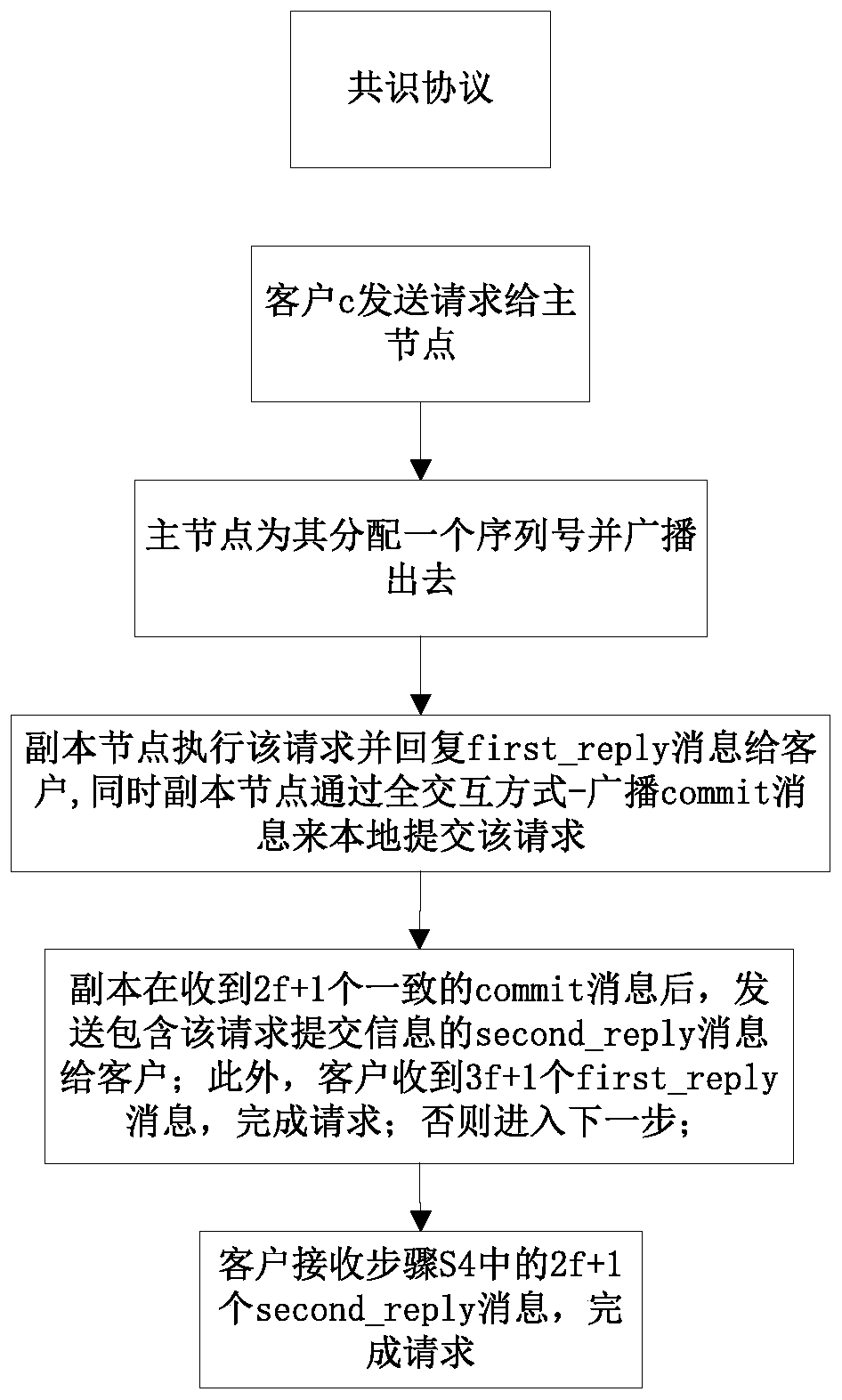Byzantine fault tolerance method
A Byzantine and consistent technology, applied in the field of distributed system copy management, can solve problems such as performance degradation, and achieve the effect of solving the inconsistent state of nodes
- Summary
- Abstract
- Description
- Claims
- Application Information
AI Technical Summary
Problems solved by technology
Method used
Image
Examples
Embodiment 1
[0043] Such as figure 1 As shown, a Byzantine fault-tolerant method works in a distributed system. There are 3f+1 replica nodes in the system, of which at most f nodes are error nodes, and f is less than the total of all replica nodes in the system It includes three sub-protocols: consensus protocol, view replacement protocol and checkpoint protocol;
[0044] The consensus protocol coordinates the replica nodes to agree on the execution order of the requests from the master replica nodes;
[0045] When the replica nodes cannot reach a consensus, the slave replica node triggers the view replacement protocol, elects a new master replica node, and executes the consensus protocol again to ensure that the consensus can be reached;
[0046] After the distributed system executes a certain number of requests, the log of the replica node is periodically cleaned up, and the replica node updates its own status.
[0047] The request history stored on each replica node includes the foll...
Embodiment 2
[0067] In the specific implementation, we apply the proposed Byzantine fault tolerance method with smooth performance degradation to 4-16 virtual machines, these virtual machines use 3.4GHz CPU, Linux 2.6Kernel, and are connected through a LAN with a bandwidth of 100Mbps. We evaluate the performance of the protocol by two metrics, throughput and latency. Experiments were carried out in scenarios where there are no fault nodes, that is, fault-free cases, and there are fault nodes, that is, normal cases. The effectiveness of the present invention is illustrated by comparing with two currently more efficient BFT protocols, PBFT and Zyzzyva.
[0068]Under fault-free cases and normal cases, we evaluate the performance of the algorithm by testing the throughput and delay changes of the system when serving different numbers of clients, and by testing the number of different error nodes, the number of nodes is 1-5, the protocol Performance changes to evaluate the fault tolerance of t...
PUM
 Login to View More
Login to View More Abstract
Description
Claims
Application Information
 Login to View More
Login to View More - R&D
- Intellectual Property
- Life Sciences
- Materials
- Tech Scout
- Unparalleled Data Quality
- Higher Quality Content
- 60% Fewer Hallucinations
Browse by: Latest US Patents, China's latest patents, Technical Efficacy Thesaurus, Application Domain, Technology Topic, Popular Technical Reports.
© 2025 PatSnap. All rights reserved.Legal|Privacy policy|Modern Slavery Act Transparency Statement|Sitemap|About US| Contact US: help@patsnap.com



